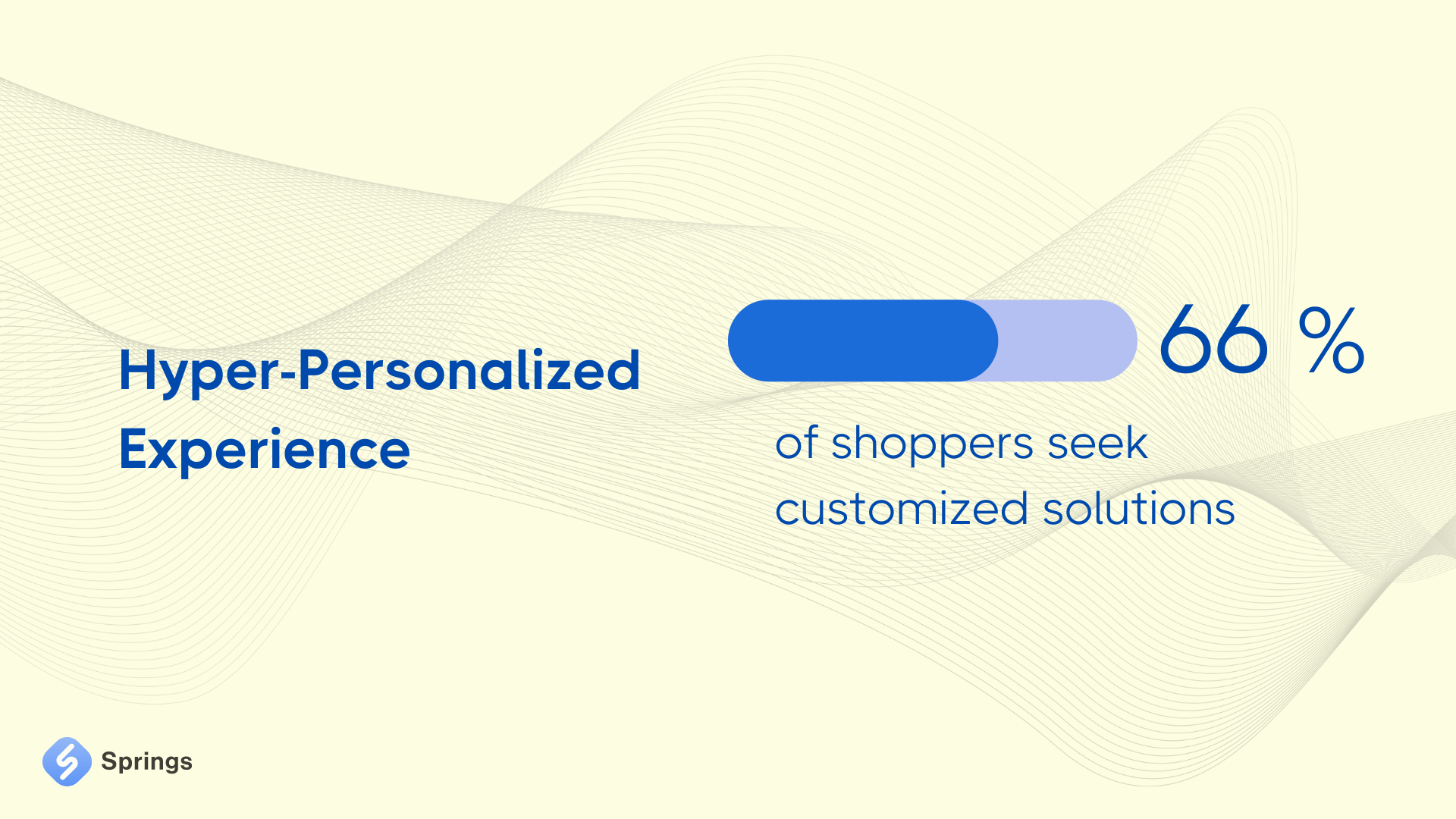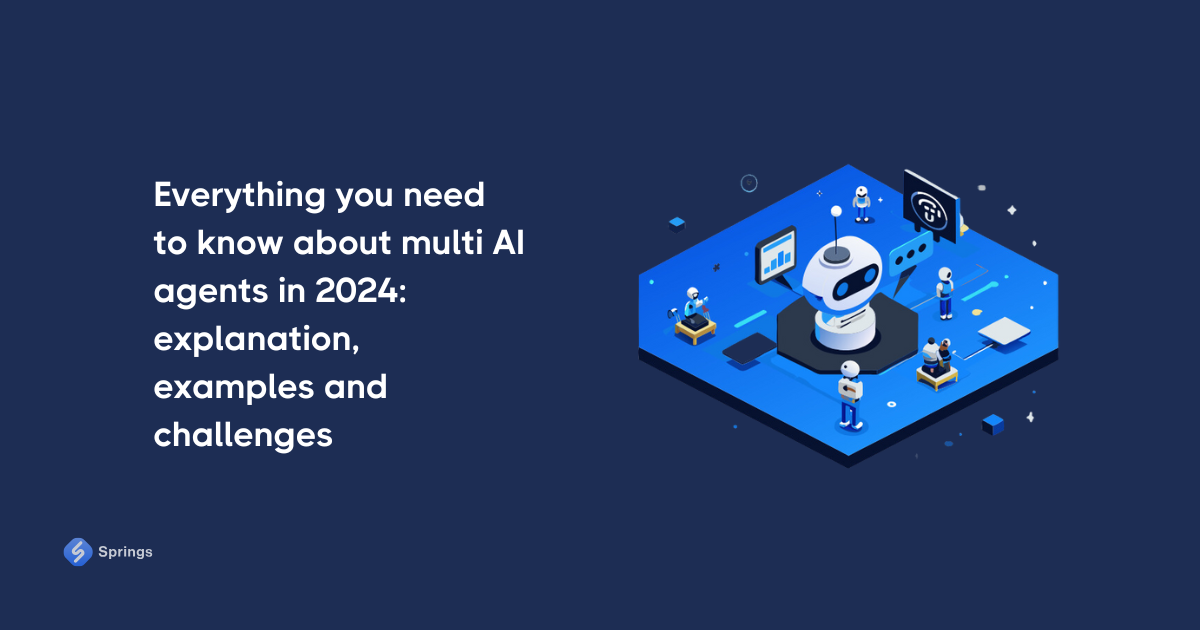Conversational AI Trends In 2024 And Beyond
The market for conversational AI solutions has been growing successfully for almost a decade. In 2020 its value was at $5,7 billion, and by 2030, experts predict that this figure will reach $32,62 billion. Alongside increased sales and cut expenses, modern conversational tools offer a fundamentally new way of effectively engaging and retaining customers.
As with any technology, the future of conversational AI will be dictated by several trends related to the market of these solutions and the latest technological advancements. Our article explores the causes that led to the wide adoption of AI-based conversational products and what it may look like in the future.
Table Of Contents:
- Conversational AI Trends In 2024 And Beyond
- The Rise of Conversational AI
- Top Conversational AI Market Trends
- Final Thoughts
- The Rise of Conversational AI
In the past, businesses relied on rule-based chatbots to handle client-related requests. These solutions could only respond using typical pre-programmed phrases. Their capabilities were highly limited and rigid, making these products inflexible and incapable of handling complex requests.
Despite the drawbacks of traditional tools, they paved the way for the conversational AI future enterprises benefit from today: chatbots, voice bots, and virtual assistants. These products provide human-like conversations and a deep understanding of user requests. The likes of ChatGPT swayed public opinion, making people trust AI-based products more.
According to McKinsey’s research on AI in 2023, ⅓ of organizations actively use generative AI in many business areas. 40% of enterprises also plan to increase their investments in solutions based on this technology.
Top Conversational AI Market Trends
In 2024 and onward, conversational AI solutions will continue to advance and gain new features. These developments will be dictated by customer demands as much as the need for more effective tools by the enterprises. Here are ten main сonversational AI trends businesses should be aware of.
Enhanced Emotional Comprehension
Increasing demand for assistants capable of understanding human emotions will play a key role in the conversational AI future, paving the way for more empathetic chatbots and assistants. According to a Zendesk study, 7 out of 10 consumers expect AI solutions to comprehend and react to their emotions.
Even now, 64% of conversational AI users note these applications have become better at responding to emotions. This is possible thanks to LLMs that bolster the NLP capabilities of chatbots and assistants. They help connect statements to intended meanings, enhancing the emotional intellect of these solutions.
Conversational AI As Business Standard
One of the biggest trends in the market for conversational tools is that it’s quickly becoming the main customer engagement product for businesses. These solutions help enterprises respond to various requests and assist users with item and service information. The latest IBM statistics show that 77% of companies work with or explore AI products.

40% of large businesses already use some form of these products in daily operations. As of December 2023, 80% of CEOs decided to use conversational solutions or planned to do so to manage their clients. 40% of respondents claimed that using these tools helped improve the customer experience.
Cross-Technology Integration
Conversational AI solutions will be paired with AR, VR, and MR technologies, making the customer experience more emmersive. Virtual and augmented reality products paired with conversational products will help clients better select items and receive personal recommendations, increasing user engagement and experience.
Research by Threekit shows that 71% of participants would shop more using AR products. A combination of conversational AI tools and IoT products also shows great potential. If these technologies are successfully combined, they can unlock new heights of customer service and buying experience.
Growing Demand For Transparency and Privacy
As in previous years, one of the most pressing сonversational AI trends will revolve around the issues of privacy and transparency. As businesses adopt these solutions, their customers will demand responsible use of these tools. Enterprises must work on new standards and regulations to address these concerns.
In addition to transparency, customers will demand safe and private storage of their personal data. To foster wider adoption, AI solution developers and LLM programmers must ensure that conversational tools offer user-centric control over data sharing and secure data handling. The sooner this happens, the more likely enterprises will adopt conversational AI tools.
Hyper-Personalized Experience
The first conversational AI solutions demonstrated that the customer experience can be personalized to the needs and preferences of individual clients. Nowadays, clients demand even more individuality in their interactions with AI-based helpers. In fact, according to Zendesk, 70% of respondents expect companies to provide this experience.

In the coming years, the demand for hyperpersonalization will be one of the leading factors in the future of conversational AI products. Currently, 66% of shoppers require enterprises to answer their specific preferences and needs. The promise of a unique buying experience makes people more likely to share their information with businesses, according to a Zendesk survey.
Industry-Specific Solutions
Conversational AI tools are slowly growing out of their basic purpose as customer chatbots and assistants. Companies from different industries are finding new ways to tailor conversational products to specific needs. This is most apparent in such industries as fashion, healthcare, finances, and education.
These solutions offer medical assistance, cosmetics products using facial recognition technology, financial advice, and tailored learning experiences for students. Such products demonstrate the potential of conversational AI in different areas. For example, in the healthcare sphere, conversational AI has already helped treat 3 million patients.
Multimodal Conversations
The rise of multimodal interfaces will be one of the major conversational AI market trends going forward. Products with this feature combine text, voice, image, and video to offer users as many communication channels as possible and make interactions more immersive. As of the start 2024, 50% of buyers prefer multimodal interactions as their main communicational format.
This new reality is reshaping how brands engage with their client base. According to an IDC forecast, 30% of AI models will use multiple data modalities by 2026. This approach will let conversational solutions move past the limitations of single-modality AI, making them more effective and capable of self-learning.
NLP/ML Hybrid Models
Regarding the inner workings of conversational AI products, 2024 will see a bigger emphasis on hybrid models using NLP and ML technologies. These new LLMs will enhance the product’s understanding of human language, making conversations more natural and contextually appropriate.
The combination of machine learning of natural language processing will result in AI-based conversational tools being more adaptable and better at self-learning. For businesses, this means their customer communication solutions will provide faster and more accurate responses.
Proactive Conversations
Conversational AI products are slowly evolving to initiate conversations with users. This change happens due to these solutions getting better at recognizing intent and receiving more advanced analytical tools. AI products analyze client preferences, behavior, and sentiments in real time, resulting in more effective conversations.
The impact of proactive recommendation has become more important, with about 65% of buyers wanting to receive suggestions and offers tailored to their needs and tastes. Another 71% of customers prefer companies offering proactive support. This is an important factor in enhancing user engagement and offering a unique customer experience.
Wider Voice Assistant Adoption
More people are using voice in their daily lives, a trend that has also impacted the field of conversational AI solutions. That’s why 82% of companies use voice assistants. These helpers recognize speech, make machine translations, and transcribe conversations. They offer a more accessible and dynamic approach for customers.
According to Zendesk, 75% of customers want to see more voice-compatible chatbots. Enterprises in retail, banking, and healthcare industries are widely adopting voice-capable solutions A study published by Deepgram shows that businesses would be more eager to adopt AI solutions if they helped save funds and were more accurate. 64% and 74% of respondents accordingly share these views.
Final Thoughts
These trends prove that AI helpers are becoming mainstream in many industries and evolving past their basic features. No matter how fast the future of conversational AI arrives, they show a clear demand for better security, personalized experiences, and multimodal capacity. It’s only a matter of time before businesses catch up to these new trends and make them real.





